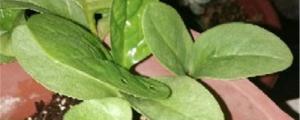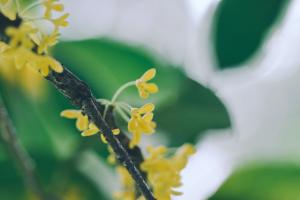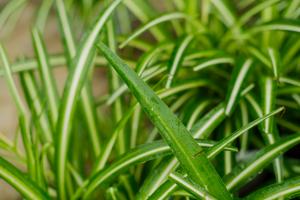Can you water a jade plant immediately after repotting?
Jade plants are well-known for their ability to survive in low-light conditions and their resistance to disease and pests. They are also popular indoor plants that can live for many years with proper care. One key aspect of caring for a jade plant is repotting, which should be done every two to three years or when the plant outgrows its current container. However, many people wonder if it is safe to water a jade plant immediately after repotting.
Why repot a jade plant?
Repotting is necessary for several reasons. First, jade plants grow relatively slowly, so they tend to become root-bound in their containers. This means the roots have filled up the pot, leaving no room for further growth. When a plant becomes root-bound, it can become stressed, which can lead to stunted growth, reduced flowering, and eventually death.
Second, repotting allows you to refresh the soil and improve drainage. Over time, soil can become compacted and nutrient-deficient, making it difficult for a plant to absorb water and nutrients. Repotting provides an opportunity to add fresh soil and to remove old, decomposing soil that may harbor pests and diseases.
When to repot a jade plant?
The best time to repot a jade plant is in the spring or early summer when the plant is actively growing. Repotting during this time allows the plant to quickly recover from any stress caused by the repotting process. If you decide to repot your jade plant during the fall or winter, it may not recover as quickly and may require extra care, such as avoiding direct sunlight and reducing watering frequency.
Can you water a jade plant immediately after repotting?
Although it is safe to water a jade plant immediately after repotting, it is important to do so carefully. Repotting can be stressful for a plant, so it is important to avoid overwatering, which can cause the soil to become waterlogged and increase the risk of root rot. At the same time, under-watering can also be detrimental to a newly repotted plant, as it may not have enough roots to absorb water from the soil.
A good rule of thumb is to water a jade plant immediately after repotting and then wait a few days before watering again. This allows the plant to adjust to its new container and soil without becoming waterlogged or dehydrated. When watering a newly repotted jade plant, be sure to check the soil moisture level with your finger or a moisture meter. The soil should be moist but not soggy.
How to repot a jade plant?
The following are the steps to repot a jade plant:
1. Choose a new pot that is one size larger than the current pot, with drainage holes.
2. Prepare the new soil by mixing one part sand, one part perlite, and one part potting mix.
3. Remove the jade plant from its current container by gently tilting the pot and gently removing the plant by the base of the stem. Avoid pulling on the leaves or stems.
4. Remove any excess soil from the roots and inspect them for any signs of disease or rot. Trim off any damaged roots with a clean, sharp pair of scissors.
5. Place a layer of new soil in the bottom of the new pot and position the jade plant in the center of the pot. Add more soil around the roots until the pot is about ? full.
6. Gently press the soil around the stems of the plant, taking care not to damage them.
7. Water the plant thoroughly and allow excess water to drain out of the drainage holes.
8. Place the newly potted jade plant in a bright, indirect location and avoid direct sunlight until it has adjusted to its new container and soil.
Conclusion
In conclusion, repotting is an essential aspect of jade plant care. Although it is safe to water a jade plant immediately after repotting, it is important to avoid overwatering and to allow the plant time to adjust to its new container and soil. By following these tips, you can ensure that your jade plant stays healthy and thrives for many years to come.

 how many times do yo...
how many times do yo... how many planted tre...
how many planted tre... how many pine trees ...
how many pine trees ... how many pecan trees...
how many pecan trees... how many plants comp...
how many plants comp... how many plants can ...
how many plants can ... how many plants and ...
how many plants and ... how many pepper plan...
how many pepper plan...
































